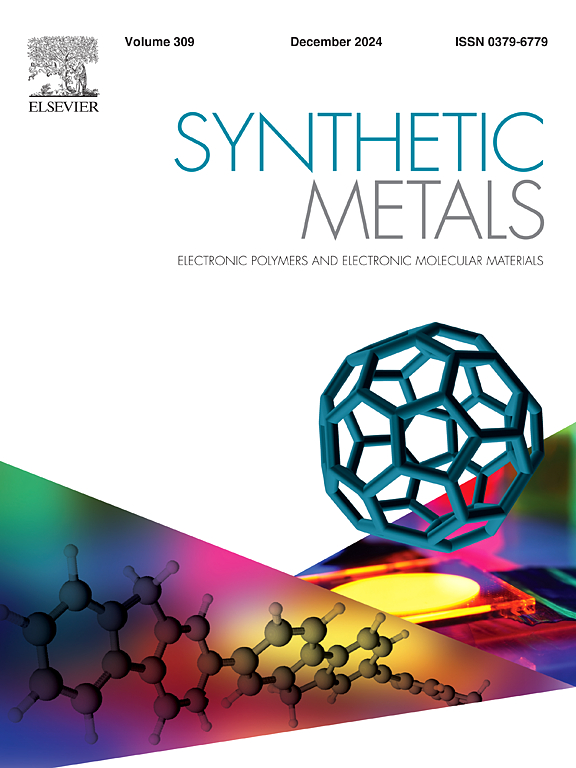li掺杂ZnO纳米粒子的高效倒转磷光有机发光器件
IF 4.6
3区 材料科学
Q2 MATERIALS SCIENCE, MULTIDISCIPLINARY
引用次数: 0
摘要
倒置有机发光器件(oled)以其高稳定性、低亮度下降、低驱动电压等优点在显示应用中备受关注。为了改善倒置oled的电荷平衡问题,研究了li掺杂ZnO纳米粒子的电子注入层。以二水合乙酸锌、五水合氢氧化铵和氯化锂为原料合成了六方纤锌矿结构的li掺杂ZnO纳米颗粒。随着Li掺杂的增加,纳米粒子的粒径逐渐减小,未掺杂、10% %和15% % Li掺杂的纳米粒子的粒径分别为4.1、3.7和3.3 nm。研究了li掺杂ZnO纳米粒子的带隙、导带最小能和价带最大能、可见光区光致发光、表面粗糙度和电导特性。利用合成的纳米颗粒制备了倒置磷光器件。锂掺杂纳米颗粒倒置器件由于电荷平衡较好,表现出较高的外量子效率(EQE)。在掺锂量为15% %的器件中,EQE达到了18.2 %的最大值。本文章由计算机程序翻译,如有差异,请以英文原文为准。
Highly efficient inverted phosphorescent organic light-emitting devices with Li-doped ZnO nanoparticles
Inverted organic light-emitting devices (OLEDs) have attracted much attention due to their superior characteristics such as high stability, low brightness drop, and low driving voltage in display applications. To improve the charge balance that has been known as a critical issue in inverted OLEDs, Li-doped ZnO nanoparticle electron injection layer was investigated. Hexagonal wurtzite-structured Li-doped ZnO nanoparticles were synthesized using zinc acetate dihydrate, ammonium hydroxide pentahydrate, and lithium chloride. The particle size of the nanoparticles decreases with Li doping, exhibiting particle sizes of 4.1, 3.7, and 3.3 nm for the undoped, 10 % and 15 % Li-doped nanoparticles, respectively. The band gap, conduction band minimum and valence band maximum energy, photoluminescence in the visible region, surface roughness, and electrical conduction characteristics of the Li-doped ZnO nanoparticles were investigated. The inverted phosphorescent devices were prepared using the synthesized nanoparticles. The inverted devices with Li-doped nanoparticles exhibited higher external quantum efficiency (EQE) due to better charge balance. The maximum EQE of 18.2 % was achieved in the 15 % Li-doped device.
求助全文
通过发布文献求助,成功后即可免费获取论文全文。
去求助
来源期刊

Synthetic Metals
工程技术-材料科学:综合
CiteScore
8.30
自引率
4.50%
发文量
189
审稿时长
33 days
期刊介绍:
This journal is an international medium for the rapid publication of original research papers, short communications and subject reviews dealing with research on and applications of electronic polymers and electronic molecular materials including novel carbon architectures. These functional materials have the properties of metals, semiconductors or magnets and are distinguishable from elemental and alloy/binary metals, semiconductors and magnets.
 求助内容:
求助内容: 应助结果提醒方式:
应助结果提醒方式:


